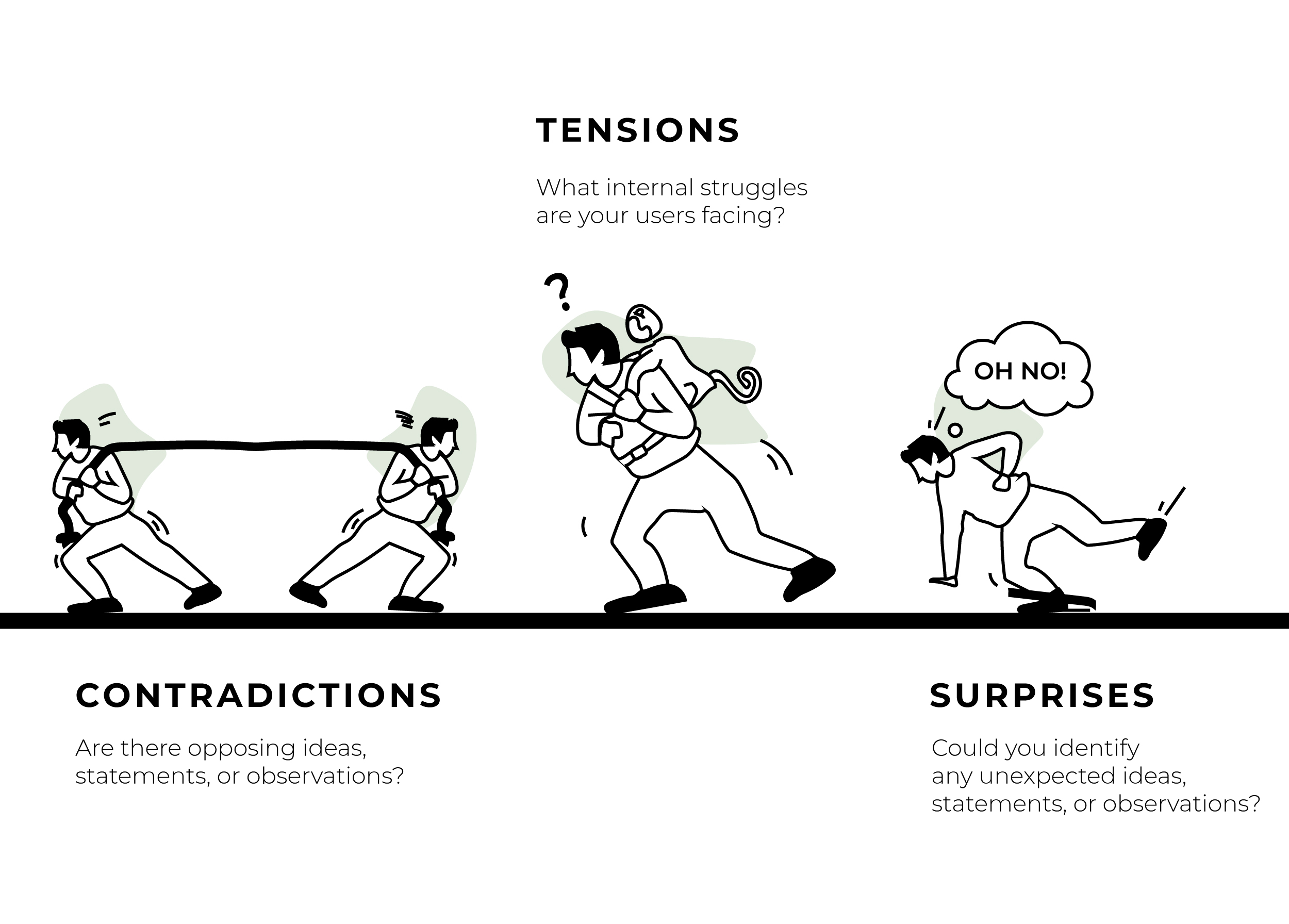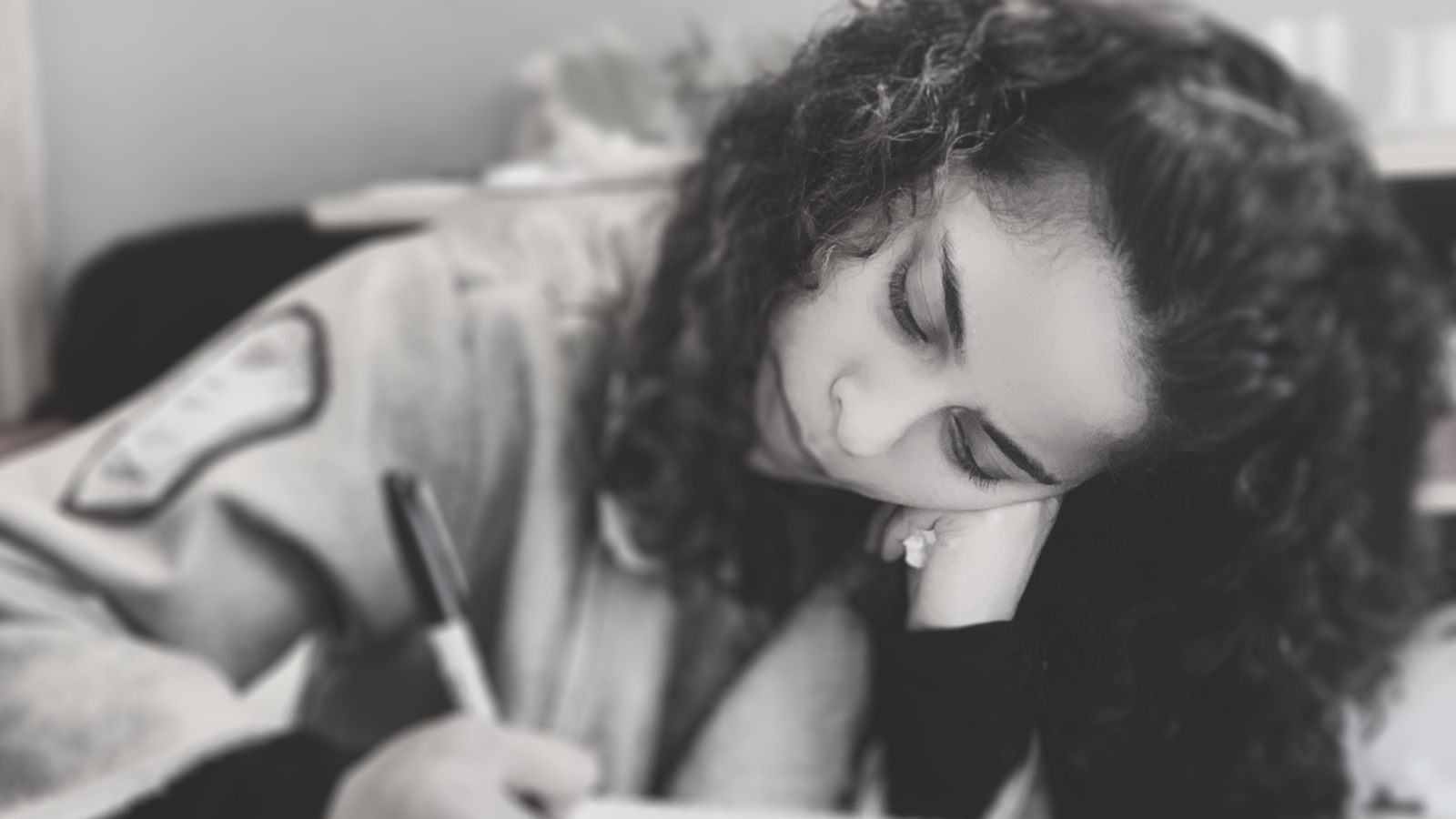If you’ve had the pleasure of doing user interviews, I’m sure you’ve experienced the what now feeling many user researchers have felt before.
This feeling commonly occurs due to the overwhelming amount of content harvested. It is, for this reason, many of us are encouraged to take on user interviews in pairs.
During a user interview, a buddy can fill many roles. They could be a mentor, a scribe, or even an observer. The buddy, however, is most important during the debriefing process.
The debriefing process analyzes your user interviews.
Through this process, observe tensions, contradictions, and surprises.
Below I have sketched a supporting grid that can aid you during your debriefing sessions.

Your tools:
- Interview notes or recordings
- Sharpies
- Post-it notes
- The debriefing grid template
Steps to follow:
- Gather your tools
- Decide who will be going first, this person will be buddy A.
- Buddy A will start to re-tell their first interview story while buddy B listens for either a tension, a contradiction, or a surprise.
- Buddy B write these points down on a post-it note without interrupting buddy A. Continue until the story is complete.
- Buddy A, reflect on the post-it notes written by buddy B, do you agree?
- Place the post-it notes onto the template into there respective lanes.
- Buddy A move on, tell the next story while buddy B continues the same steps mentioned.
- Capture all of Buddy A’s stories.
- It is time to swop, Buddy B, you are now Buddy A, and buddy A, you now buddy B.
- Complete Steps 3-8.

